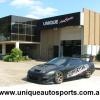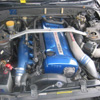Uas 300Zx Vs. Standard 300Zx Aero Analysis And Results
Announcements
-
Similar Content
-
Latest Posts
-
Hi Andrew! I'm new on this forum and i'm delighted to see someone else with a high horsepower r32 gtst! I've gone through most of your journey and i'm super impressed with all the work you've done! I've got many question since i'm chasing something similar in my GTST!
-
By PotatoCake · Posted
Im getting the switch and some other stuff wired up next week, so ill post a video then. But ive seen them on r32's and VL's. Depending on where on the exhaust they are placed, after how many resonators etc it pretty much sounds like a straight piped race car. Very loud haha -
How does it sound with the AES open ? Like a full open exhaust or a bit more half and half ?
-
Crisis averted... after 15 hours of sanding the centres are fitted lol. Will make sure this never happens again.
-
Mostly likely welded. 'Coz it's f**ked. You have the car right there. Get someone to tap on the underside while you sit in the back with the seat out. You'll find it faster than we will.
-






Recommended Posts
Create an account or sign in to comment
You need to be a member in order to leave a comment
Create an account
Sign up for a new account in our community. It's easy!
Register a new accountSign in
Already have an account? Sign in here.
Sign In Now